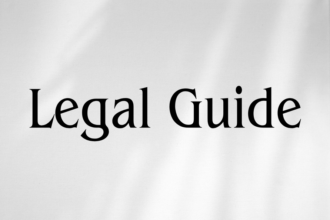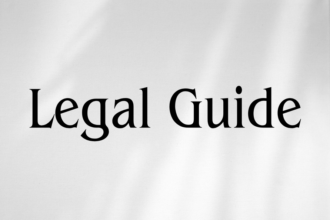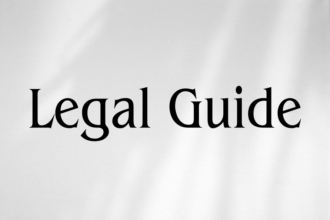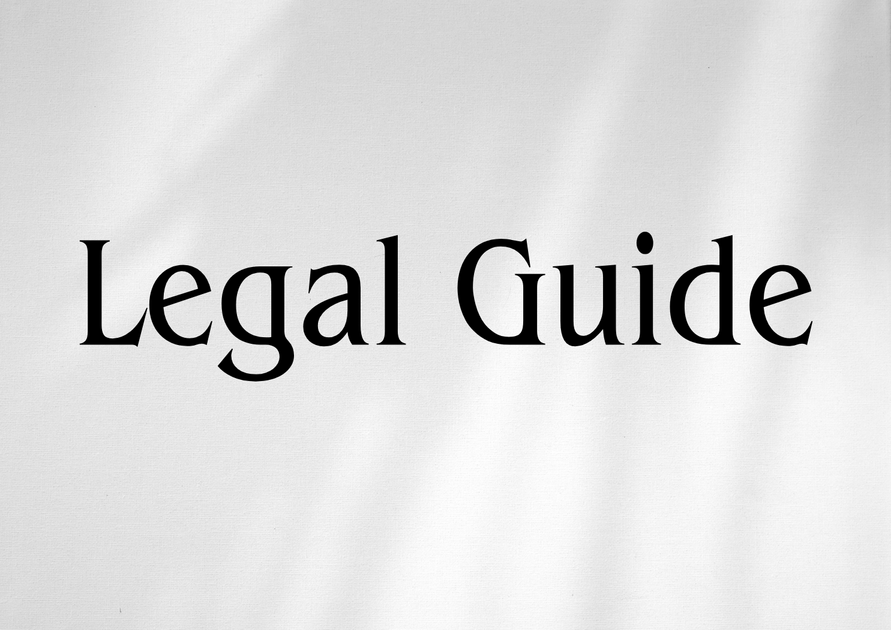Introduction: Why Legal Clarity on AI in the UAE Matters Now More Than Ever
The surge in the adoption of artificial intelligence (AI) across the UAE has transformed how businesses, creatives, and corporations operate, driving innovation in sectors ranging from real estate to digital marketing. However, this dynamic growth also introduces complex legal risks, especially when using AI tools for creative or commercial purposes. As the UAE accelerates its journey towards becoming a global AI hub — underscored by national AI strategies and high-profile government initiatives — understanding and managing these risks is not merely advisable, but imperative for legal compliance and sustainable success. The legal landscape is also evolving rapidly, as reflected in new federal decrees, updated copyright regulations, and data protection frameworks introduced in 2024 and 2025. For executives, HR managers, business owners, and legal practitioners, this means that ensuring both compliance and ethical best practices in AI adoption is a strategic necessity. This article provides an in-depth, consultancy-grade analysis of the latest regulations, explores practical steps to mitigate exposure, and offers actionable insights tailored to the UAE’s unique regulatory environment.
Table of Contents
- Overview of UAE AI-Related Regulations as of 2025
- Copyright Infringement and Intellectual Property Concerns
- Data Privacy and Security Compliance
- Liability and Commercial Contractual Risks
- Compliance Obligations and Mandatory Checks
- Practical Scenarios and Case Studies
- Risk of Non-Compliance: Penalties and Remedies
- Strategies for Proactive Legal Compliance
- Conclusion and Forward-Looking Recommendations
Overview of UAE AI-Related Regulations as of 2025
The UAE’s National AI Strategy and Regulatory Vision
Since the launch of the UAE National Artificial Intelligence Strategy 2031, federal authorities have steadily issued new guidelines and enacted legislative updates to regulate AI use in both creative and commercial settings. Recent reforms are designed to strike a balance between fostering technological innovation and ensuring ethical, safe, and lawful deployment of AI.
The key statutes and guidelines influencing this environment include:
- Federal Decree Law No. 38 of 2021 on Copyright and Related Rights (as amended in 2024).
- Federal Decree Law No. 45 of 2021 regarding the Protection of Personal Data (also known as the UAE Personal Data Protection Law, or PDPL), with important executive regulations issued in Cabinet Resolution No. 32 of 2024.
- Cabinet Resolution No. 10 of 2023 on Regulation of Artificial Intelligence in the UAE, which imposes governance and transparency requirements for AI-driven commercial tools and platforms.
- Sector-specific directives from the Ministry of Human Resources and Emiratisation (MOHRE) concerning the use of AI for HR screening, recruitment, and employee analytics.
As such, compliance does not rest on a single statute, but requires continuous monitoring of interlinked laws and, increasingly, industry-specific regulations as AI adoption spreads.
Comparative Overview: Regulatory Evolution
| Aspect | UAE Law (pre-2021) | UAE Law (2021–2024 updates) |
|---|---|---|
| Copyright and IP | Protection limited to human authors; no mention of machine-generated works. | Explicit provisions for AI-generated works; ambiguity in author/owner attribution. |
| Data Protection | No comprehensive federal data privacy framework. | Federal PDPL mandates lawful collection, processing, and consent, including for AI tools. |
| AI Governance | Limited oversight; sectoral guidelines only. | National-level AI ethics and transparency guidelines enacted (Cabinet Resolution 10/2023). |
Copyright Infringement and Intellectual Property Concerns
AI-Generated Content: Who Owns What?
The most contentious legal risk when using AI for creative output in the UAE involves copyright ownership and potential infringement. Under the amended Federal Decree Law No. 38 of 2021 on Copyright and Related Rights, creative works (literary, audio, visual, digital) must generally be attributable to a human author to enjoy copyright protection. Yet, the law remains silent on whether works created with minimal human intervention via AI tools (for example, text, designs, images, code) are eligible for full copyright protection.
Practical Consultancy Insight
In practice, businesses and creators employing AI tools such as generative art platforms or automated content writers face two key uncertainties:
- Copyright Attribution: If human creative input is essential to the final work, the human may claim authorship. If the AI is the primary generator, the work could lack enforceable copyright protection. This exposes companies to the risk of their AI-generated content being copied without recourse.
- Infringement Liability: Many AI systems are trained on vast, and sometimes unlicensed, datasets. This creates exposure to claims if the AI-generated content is found to infringe third-party copyrights, even if the infringement was unintentional.
| Scenario | Ownership Status | Potential Legal Risk |
|---|---|---|
| Human writes, AI assists (minor role) | Human author owns rights | Low risk |
| AI autonomously generates content | No clear owner; possible denial of copyright | High risk – potential for loss of exclusivity |
| Content mirrors third-party work due to training data | Unclear – risk of infringement | Significant risk – liability for damages |
Official Regulatory Position
The UAE Ministry of Justice and the Federal Legal Gazette have recently signaled, in interpretative guidelines, a cautious approach: until further legislative clarity emerges, organizations must implement due diligence to ensure AI-generated works do not infringe third-party rights or misrepresent authorship.
Illustrative Example
Case Study: A UAE-based advertising agency uses a generative AI tool to create visual content for a corporate campaign. Six months after campaign launch, a European artist discovers their copyrighted illustration is strikingly similar to an image used. Upon investigation, the agency discovers the AI system was trained on unlicensed images. The artist seeks compensation; the agency faces reputational damage and a costly legal settlement. Key Lesson: Even indirect use of copyrighted data can transmit significant legal risk if not properly vetted.
Data Privacy and Security Compliance
The UAE Personal Data Protection Law (PDPL)
AI tools often process large volumes of personal and sensitive data, making compliance with the Federal Decree Law No. 45 of 2021 (PDPL) critical. The law requires data controllers and processors — including those using AI in commercial or creative projects — to ensure legal grounds for data processing, obtain explicit consent where necessary, and protect data subjects’ rights at all stages.
Consultancy Insight: Common Compliance Pitfalls
- Lack of Transparency: Failing to inform data subjects that their information may be processed or reformulated by AI tools.
- Inadequate Data Minimization: Excessive or unnecessary collection of personal data during AI model training or deployment.
- Cross-Border Transfers: Many AI tools are cloud-based, resulting in transfers of data outside the UAE. Article 22 of the PDPL restricts international data transfers absent adequate safeguards or regulatory approval.
Organizations must perform Data Protection Impact Assessments (DPIAs) before deploying AI tools that process large-scale or sensitive data as per MOHRE advisories and Cabinet Resolution No. 32 of 2024.
| Compliance Requirement | Old Law (pre-2021) | Current Law (2021–2025) |
|---|---|---|
| Data Subject Consent | General, implied consent sufficient | Explicit, informed consent is mandatory |
| Transparency on AI Use | Not required | Clear notification and documentation required |
| Data Localization | Not enforced | Stringent restrictions on international data transfers |
Illustrative Hypothetical
Consider a technology start-up leveraging AI chatbots to respond to customer inquiries. If the chatbot collects and processes customer data but fails to provide a privacy notice or receives data from non-consenting users, the start-up could be subject to regulatory investigation and administrative fines under Article 61 of the PDPL.
Recommended Visual: Compliance Checklist
- Obtain explicit consent before processing data via AI tool.
- Inform data subjects about AI-driven processing (e.g. privacy notice updates).
- Conduct a DPIA prior to system launch.
- Implement safeguards for international data transfers.
- Review data collection and retention schedules.
Liability and Commercial Contractual Risks
Contracting for AI Supplies and Outputs
Many UAE entities acquire AI-generated assets or license AI tools via commercial contracts. The lack of settled law on AI-generated works elevates the importance of careful contractual drafting to mitigate risk exposure and clarify ownership, warranties, and indemnities.
Key legal risks here include:
- Unclear Risk Allocation: Without express indemnities, a client purchasing AI-generated content could be held liable for an infringement initiated by the AI supplier or developer.
- Insufficient Due Diligence: Failing to verify the AI developer’s compliance with data protection and IP obligations can result in joint liability or exposure to civil suits.
Best Practice: Contract Clauses for AI Transactions
- Ownership Clauses: Define author/owner rights clearly for AI-generated deliverables.
- Warranties and Indemnities: Secure commitments from the supplier that deliverables do not infringe third-party rights and comply with the law.
- Compliance Obligations: Mandate adherence to PDPL and copyright laws in tool operation and content generation.
- Audit and Inspection Rights: Allow for periodic review of AI processes and compliance status.
Case Study
Example: A digital agency in Abu Dhabi licenses an AI content tool. After a client raises a claim of plagiarism, it emerges the agency’s supplier sourced training data ambiguously. The absence of contractual warranties and indemnities leaves the agency exposed to litigation costs and reputational loss. Lesson: Precise, tailored clauses are critical in AI supplier agreements.
Compliance Obligations and Mandatory Checks
MOHRE Guidance and UAE Government Portal Directives
The Ministry of Human Resources and Emiratisation (MOHRE) has developed sector-specific guidelines for lawful AI use, notably in HR and recruitment. Emirates-based companies employing AI in candidate screening or employment analytics are now subject to mandatory transparency and non-discrimination audits. This aligns with Cabinet Resolution No. 10 of 2023 that prohibits discrimination or bias in AI-driven decisions concerning employment and service delivery.
| AI Use Case | Compliance Requirement | Governing Law/Guideline |
|---|---|---|
| Automated candidate screening | Disclosure of AI use and non-discrimination guarantee | MOHRE Guidance 2024 |
| AI-based marketing personalization | Informed consent and data subject rights | PDPL, Cabinet Resolution 32/2024 |
| AI-driven content/media generation | IP due diligence, transparent sourcing | Copyright Law No. 38/2021 (as amended) |
Proactive Audit Checklist
- Has the organization documented AI deployment and reviewed the legal basis for processing and generation?
- Are robust IP clearance and data processing protocols in place?
- Is compliance with both the federal laws and ministerial sector directives demonstrable?
Practical Scenarios and Case Studies
Scenario One: AI-Generated Art for Real Estate Marketing
A UAE property firm employs an AI image-generation tool for brochures. A regional competitor claims the visuals infringe their proprietary rendering. Investigation reveals the AI was trained on multiple unlicensed renders. Result: Legal challenge, withdrawal of marketing materials, potential damages.
Scenario Two: Automated Legal Drafting Tools
An international law firm’s UAE office uses AI to draft standard contracts. Human review is minimal. Contract errors result in financial loss for a client; liability is debated. The firm faces a professional negligence claim, with the court emphasizing the duty of care in human supervision of AI-driven outputs.
Scenario Three: Generative Chatbots in Customer Service
A retail group deploys an AI chatbot to handle customer data. Due to improper privacy notices, several customers complain of unauthorized data processing. The UAE Data Office initiates an investigation, resulting in administrative penalties and mandatory remedial action.
Risk of Non-Compliance: Penalties and Remedies
Administrative, Civil, and Criminal Liability
Non-compliance with AI-related legal obligations carries multi-layered risks:
- Administrative Fines: The Federal Data Office may impose penalties up to AED 5 million for serious PDPL violations, as stipulated under Article 61.
- Injunctions: Copyright infringement may result in an order to cease use of AI-generated works, withdrawal of marketing materials, or deletion of unlawfully processed data.
- Civil Damages: Aggrieved parties may seek compensation for commercial loss, reputational harm, or infringement of exclusive rights.
- Criminal Sanctions: In extreme cases, intentional IP violations or data breaches may lead to criminal prosecution under relevant federal statutes.
| Violation | Relevant Penalty (as of 2025) |
|---|---|
| Data processing without consent (PDPL) | Fines up to AED 5 million, possible business suspension |
| Copyright infringement via AI-generated content | Injunction, compensation, potential criminal referral |
| Discriminatory use of AI in employment | MOHRE penalties, civil litigation |
Strategies for Proactive Legal Compliance
1. Implement Robust Governance Policies
Establish clear internal guidelines on acceptable AI use, emphasizing compliance with copyright, data protection, and anti-discrimination laws. Develop governance structures that include regular compliance audits and staff training.
2. Strengthen Contractual Safeguards
Revisit all supplier, licensing, and client agreements involving AI-related deliverables. Incorporate explicit clauses addressing ownership, warranties, indemnities, and compliance with UAE statutes.
3. Conduct Comprehensive Due Diligence
Verify the compliance status of all third-party AI tools and solutions. Assess the provenance of datasets used for training, and confirm that all licenses and permissions are valid.
4. Regularly Update Privacy Notices and Internal Protocols
Align privacy policies and user notices with PDPL requirements, specifically detailing AI-driven processing activities and cross-border transfers. Periodically review and update data retention schedules.
5. Monitor and Respond to Regulatory Changes
Assign responsibility for ongoing monitoring of legal updates, including new Federal Decrees, MOHRE advisories, and Cabinet Resolutions. React promptly to guidance or enforcement activity from the Federal Data Office or other authorities.
Conclusion and Forward-Looking Recommendations
The regulatory landscape for AI-driven creative and commercial work in the UAE is rapidly maturing. The 2024–2025 legal updates emphasize transparency, accountability, and protection of proprietary and personal rights in the digital economy. For businesses, creative professionals, and legal practitioners, this is both a challenge and an opportunity — robust compliance with emerging statutes and best practices is now foundational to sustainable innovation and competitiveness.
We strongly recommend that all UAE-based stakeholders:
- Integrate AI-specific legal risk assessments into project planning and procurement processes.
- Pursue ongoing staff training on copyright, data protection, and ethical use of AI.
- Establish responsive internal reporting and escalation mechanisms for potential legal issues related to AI use.
By implementing these measures proactively, organizations can harness the full benefits of AI while minimizing legal exposure and safeguarding reputation. As the UAE continues to cement its role as a frontrunner in AI adoption, the firms that prioritize sound legal risk management will inevitably lead in compliance and innovation alike.




